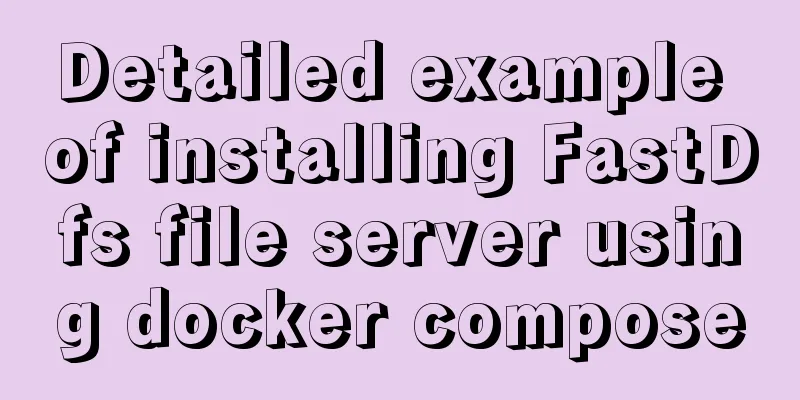Summary of relevant knowledge points of ajax in jQuery

Preface Students who learn JavaScript know that AJAX (async javascript and Let's first review how to send an ajax network request in native js Classic 4 Steps1. Native js ajax network request
// IE9 and above // const xhr = new XMLHttpRequest()
// IE9 and below // const xhr = new ActiveXObject('Mricosoft.XMLHTTP')
// For this compatible writing method, we can use a function to encapsulate function createXHR() {
var req = null;
if (window.XMLHttpRequest) {
// If you have this XMLHttpRequest object, just use req = new XMLHttpRequest();
} else {
// Otherwise, use the IE8 or later method req = new ActiveXObject("Microsoft.XMLHTTP");
}
return req;
}
// Step 1: Create an ajax object var xhr = createXHR(); // This way you get an ajax object // Step 2: Configure network request information xhr.open('get', './demo.php', true)
// xhr.open('get/post', 'To which address do you want to send the network request', synchronous or asynchronous, the default is true for asynchronous and false for synchronous)
// If the get request has parameters, they need to be concatenated after the address, for example './demo.php?id=2&name=sanqi'
// If it is a post request, the parameters should be placed in send(), for example: xhr.send('id=2&name=sanqi')
// Step 3: Send network request xhr.send() //
// Part 4: Determine the response status and get the data xhr.onreadyStateChange = function () {
// This event is triggered every time the readyState changes // We will check here whether the value of readyState is 4
// And the http status code is 200 ~ 299
if (xhr.readyState === 4 && /^2\d{2|$/.test(xhr.status)) {
// This means the verification is passed // We can get the content of the response from the server console.log(xhr.response);
}
}
Here are the 5 states of readyState
The above is the native js sending an ajax network request 2. About ajax network requests using jQuery When we were learning jQuery, we realized that everyone was saying that jQuery has encapsulated everything for us, and we don't need to write these network requests. Even so, we still can't be blind, and we still need to understand it in detail before using it. (1). Use jQuery to send a get request The following unified backend code uses the file name: test.php
<?php
header('content-type:text/html;charset=utf-8;');
$id = $_REQUEST['id'];
$name = $_REQUEST['name'];
$arr = [
'id' => $id,
'name' => $name
];
echo json_encode($arr);
?>
Sending a get request using jQuery
$.get('./test.php','id=999&name=三七安',function (res) {
//The first parameter is the requested address //The second parameter is the data to be sent to the server //The third parameter is the callback function when successful, which contains the data returned by the service //The fourth parameter is the data format we want to get: there are several options: json, text, html, xml, script
console.log(res);
},'json')
You can see that the request was sent successfully.
(2) Send a post request using jQuery
$.post('./test.php',{id:123,name:'post request'},function (res) {
//The other parameters here are the same as those of the get request //Note that I write the transmission data here in object format, and the request can be sent successfully, that is to say //Whether it is a get request or a post request, if you want to send data to the server, you can use either string format or object format console.log(res);
},'json')
This is the page where the request was successful
(3) Use jQuery to send a comprehensive ajax request Let’s first look at the syntax
// Use the $.ajax method // It only accepts one parameter, which is an object. This object performs all configurations for the current request. $.ajax({
url: './ajax', // Required, requested address type: 'GET', // Optional, request method, default is GET (ignore case)
data: {}, // Optional, the parameter to be carried when sending the request dataType: 'json', // Optional, the data type of the expected return value, the default is string
async: true, // Optional, whether to enable asynchronous operation, default is true
success() {}, // Optional, callback function for success error() {}, // Optional, callback function for failure cache: true, // Optional, whether to cache, default is true
context: div, // Optional, this in the callback function points to, the default is the ajax object status: {}, // Optional, execute the function according to the corresponding status code timeout: 1000, // Optional, timeout event })
It seems that we have to fill in a lot of parameters every time, but in fact most of the parameters are optional. We just need to fill them in according to the actual situation. In the compiler, you can also quickly generate some code by directly entering ajax
Send ajax request code
$.ajax({
type: "get",
url: "./test.php",
data: {
id:000,
name:'Demo of sending $.ajax request'
},
dataType: "json",
success: function (response) {
console.log(response);
}
});
Open the webpage and you can see the data we got back from the backend
Here are some Ajax global functions, also called hook functions, which are functions executed at a certain stage in the entire Ajax request process and are triggered by any Ajax request. 1. ajaxStart , this function will be triggered when any request starts
$(window).ajaxStart(function () {
console.log('A request has started')
})
2. ajaxSend , this request will be triggered before any request is ready to send .
$(window).ajaxSend(function () {
console.log('One is about to be sent')
})
3.ajaxSuccess , this function will be triggered when any request is successful.
$(window).ajaxSuccess(function () {
console.log('A request was successful')
})
4.ajaxError , this function will be triggered when any request fails.
$(window).ajaxError(function () {
console.log('A request failed')
})
5.ajaxComplete , this function will be triggered when any request is completed
$(window).ajaxComplete(function () {
console.log('A request has been completed')
})
6.ajaxStop, this function will be triggered when any request ends
$(window).ajaxStop(function () {
console.log('A request has ended')
})
SummarizeThis is the end of this article about the summary of relevant knowledge points of ajax in jQuery. For more relevant jQuery ajax knowledge points, please search 123WORDPRESS.COM's previous articles or continue to browse the following related articles. I hope everyone will support 123WORDPRESS.COM in the future! You may also be interested in:
|
<<: MySQL 5.7.18 free installation version configuration tutorial
Recommend
Solution to high CPU usage of Tomcat process
Table of contents Case Context switching overhead...
A brief talk about calculated properties and property listening in Vue
Table of contents 1. Computed properties Syntax: ...
Web designers should optimize web pages from three aspects
<br />With the increase of bandwidth, there ...
In-depth understanding of Vue's plug-in mechanism and installation details
Preface: When we use Vue, we often use and write ...
JavaScript Basics Variables
Table of contents 1. Variable Overview 1.1 Storag...
A brief talk about the diff algorithm in Vue
Table of contents Overview Virtual Dom principle ...
MySQL merges multiple rows of data based on the group_concat() function
A very useful function group_concat(), the manual...
Turn off the AutoComplete function in the input box
Now we can use an attribute of input called autoco...
Detailed example of remotely connecting to Docker using TLS encrypted communication
By default, Docker runs over a non-networked UNIX...
Classification of web page color properties
Classification of color properties Any color can ...
Problem analysis of using idea to build springboot initializer server
Problem Description Recently, when I was building...
Install Zookeeper under Docker (standalone and cluster)
After starting Docker, let's take a look at t...
Several ways to shut down Hyper-V service under Windows 10
When using VMware Workstation to open a virtual m...
Solution to the root password login problem in MySQL 5.7
After I found that the previous article solved th...
5 common scenarios and examples of JavaScript destructuring assignment
Table of contents Preface 1. Extract data 2. Alia...













